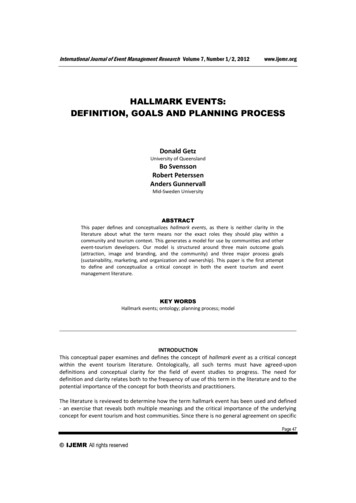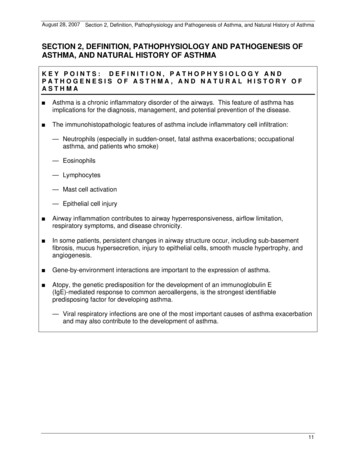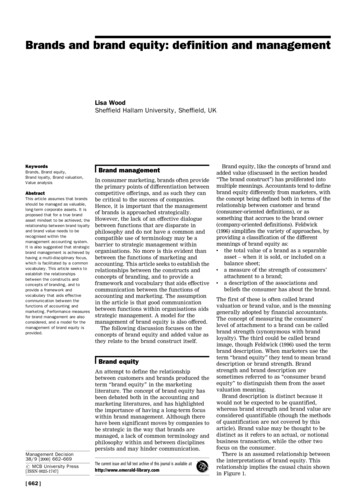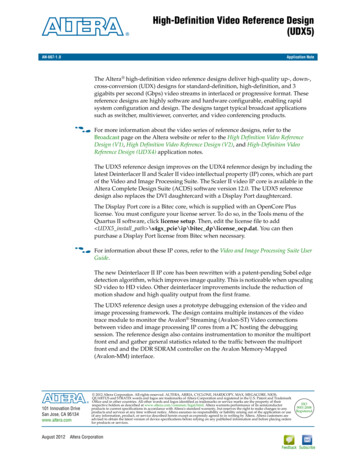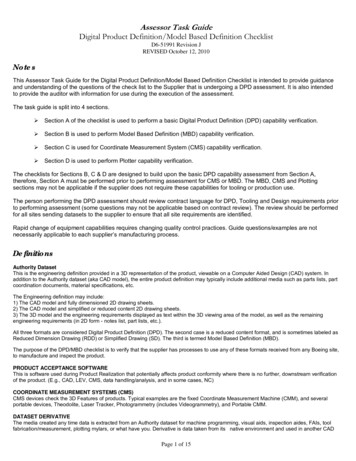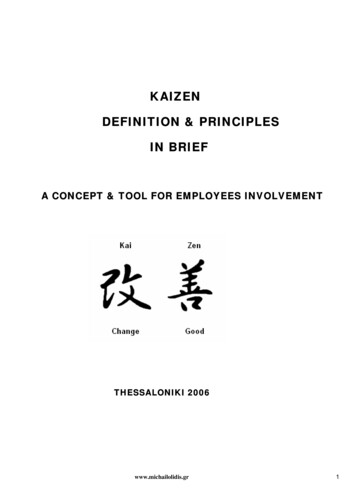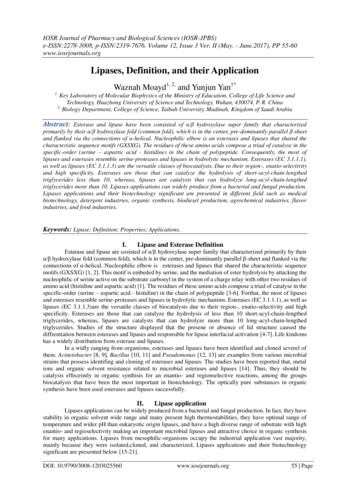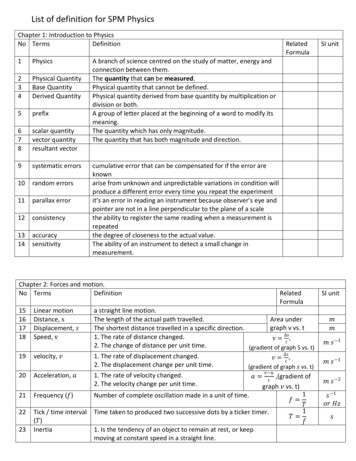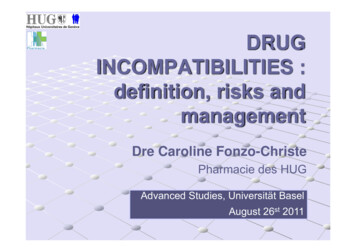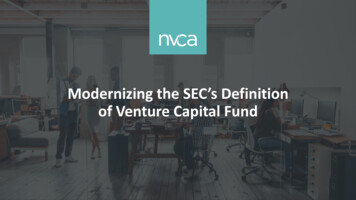
Transcription
Modernizing the SEC’s Definitionof Venture Capital Fund
Background on SEC’s VC Fund DefinitionWhere it Came From: Dodd-Frank eliminated the exemption from registration for investment advisors withfewer than 15 clients, thus forcing hedge funds and private equity funds to becomeregistered investment advisors (RIAs). BUT, Congress specifically exempted venture capital funds from the requirement,allowing them to register as exempt reporting advisors (ERAs). Directed the SEC to create definition of “venture capital fund” to determine whoqualifies for ERA status.
Venture Capital’s Vital Role in Startup GrowthEARLY DEVELOPMENTEARLY STAGE VCGROWTHLATE STAGE VENTUREIDEA / START-UPSEED/ANGEL INVESTOR CONCEPT - PRODUCT BUILD TEAM & Co. SCALE Co. - EXIT PRODUCT RISK MARKET RISK EXIT RISK SMALL CASH NEED LARGER CASH NEED HIGH CASH NEED NO REVENUE NO PROFITS PATH TO PROFITS
Policy Reasons for ExemptReporting Advisor StatusExemption demonstrates that VC fundswere never intended target of thisregulation:Long-term equityinvestment VC model lowpriority for regulation: VCfunds rarely take controlpositions in companies,portfolio company feesdon’t support returns,leverage not prominent infinancings.Founder VC GrowthBecause of the economicimpact of VC activity oninnovation and newcompany growth, Congressdecided that the policypriority for VC regulationshould be on making capitalavailable for startup activityrather than compliance.
What Does it Mean to be ERA?Exempt Reporting Advisors register with the SEC under a more limited compliance andreporting regime, which simplifies and reduces the costs of running a venture capitalfund. Reduced compliance costs due to: Limited form ADV filing;No form PF requirements;No routine audits, though still subject to for cause examinations;No additional cost of RIA compliance program. Greater freedom of external communications as advertising rule not applicable. Also not subject to custody or bookkeeping rules, further reducing costs and complexity of VCfund management.
Annual Compliance Costs: ERA vs RIAMedian Compliance Costs for Fiscal Year 2016by Select Category ERA/RIA Software and systems licensing fees & vendorcosts: 3,500/ 10,000 Legal costs: 13,000/ 42,500 Compensation related to staff complianceefforts: 28,500/ 225,000 External compliance services: 24,500/ 53,500Source: NVCA Compliance & Financial Reporting Costs Survey, conducted in Fall 2017.Total Annual Compliance Costs for Fiscal Year 2016 byERA/RIA Designation
Parameters of SEC’s VC Fund DefinitionSEC created a multi-factor test to define whether a fund is pursuing a VC strategy,pursuant to Rule 203(l)-1 of the Investment Advisers Act.In order to register as an ERA, a fund must satisfy each factor of the definition: Representation: Must represent itself as pursuing a venture capital strategy, including in investor andmarketing materials; Leverage limitations: Strict limitations on the use of leverage at the portfolio company and fund levels; Redemptions: Prohibition on annual redemptions of investors; and Qualifying investments: At least 80 percent of a fund’s activity must be direct investments into privatecompanies, or “qualifying” investments.Violation of any of these parameters by one fund can trigger an RIA regime for every fund managed bythat VC firm.
VC Activities that are “Nonqualifying” Investments Investments in other VC funds: The creation of more VC funds, particularly in emerging ecosystems, iscritical to any effort to expand access to venture capital. And there are few better positioned tosupport new firms than those already in the business. A manager with regional venture capitalexperience (e.g. Silicon Valley) may deploy some fund capital to invest in, for example, a Midwesternfund manager who is better positioned to know their market and the players within. But currently,investments into other VC funds are considered nonqualifying investments. Post-IPO biotech financings: Many biotech firms go public before their product is available for sale.They often rely on VCs and other existing investors for capital infusions to finance the costs ofcommercialization, including clinical trials, research and hiring. But because these are currentlyconsidered nonqualifying investments, VC funds must limit the amount of capital they can provide totheir public portfolio companies. Secondary investments: Because acquiring secondary shares are considered nonqualifyinginvestments, VC funds are discouraged from providing angel and seed stage investors and foundersliquidity. As companies have stayed private longer, path to liquidity has become a significant issue inthe venture capital industry.
Modernizing the definition of “Qualifying” Investments Allow VC funds to invest in other VC funds, thus better capitalizing regionalfunds to enable them to invest in companies within their territories. Manycompanies in these regions are overlooked by the coastal funds. Allow VC funds to make follow-on direct investments in portfolio companiesthat go public.
Feb 04, 2020 · Software and systems licensing fees & vendor costs: 3,500/ 10,000 Legal costs: 13,000/ 42,500 Compensation related to staff compliance efforts: 28,500/ 225,000 External compliance services: 24,500/ 53,500. Total Annual Compl

